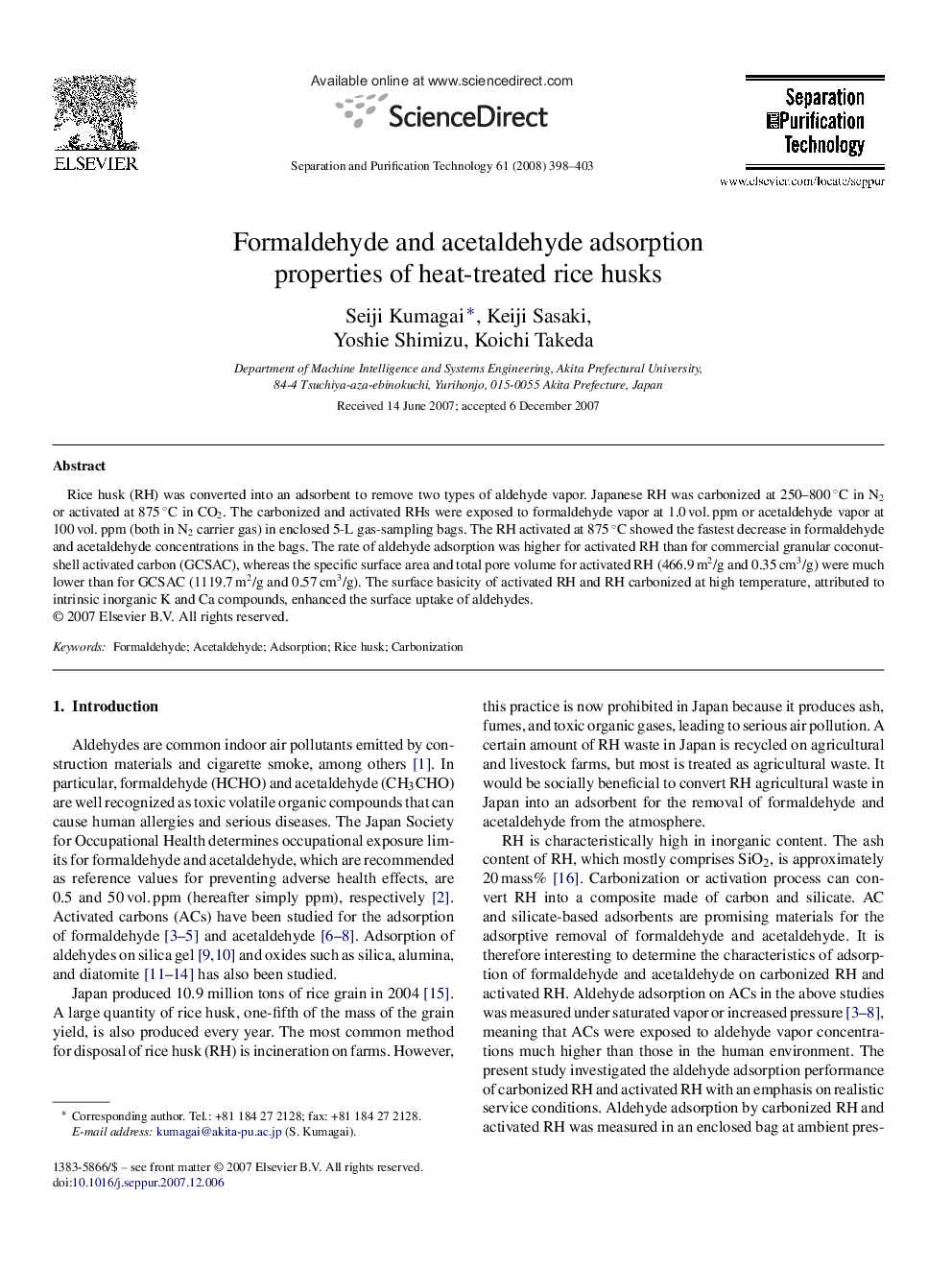| Article ID | Journal | Published Year | Pages | File Type |
|---|---|---|---|---|
| 643761 | Separation and Purification Technology | 2008 | 6 Pages |
Rice husk (RH) was converted into an adsorbent to remove two types of aldehyde vapor. Japanese RH was carbonized at 250–800 °C in N2 or activated at 875 °C in CO2. The carbonized and activated RHs were exposed to formaldehyde vapor at 1.0 vol. ppm or acetaldehyde vapor at 100 vol. ppm (both in N2 carrier gas) in enclosed 5-L gas-sampling bags. The RH activated at 875 °C showed the fastest decrease in formaldehyde and acetaldehyde concentrations in the bags. The rate of aldehyde adsorption was higher for activated RH than for commercial granular coconut-shell activated carbon (GCSAC), whereas the specific surface area and total pore volume for activated RH (466.9 m2/g and 0.35 cm3/g) were much lower than for GCSAC (1119.7 m2/g and 0.57 cm3/g). The surface basicity of activated RH and RH carbonized at high temperature, attributed to intrinsic inorganic K and Ca compounds, enhanced the surface uptake of aldehydes.
